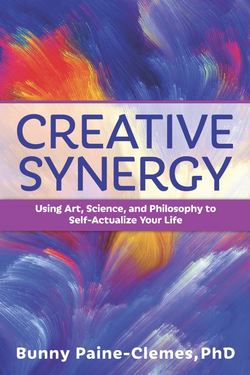Читать книгу Creative Synergy - Bunny Paine-Clemes - Страница 45
На сайте Литреса книга снята с продажи.
Specialization vs. the Interdisciplinary Approach
ОглавлениеYou may have noticed that this book is interdisciplinary. It draws on many of the fields that we are used to viewing as separate: science, spirituality, literature, the arts, engineering, psychology, sports, business, and philosophy—as well as traditions both Eastern and Western. It may seem bizarre to write one book uniting what, until now, have been streams of very different approaches. But the trend in higher education has also been moving away from fragmentation and toward integration.
Ernest Boyer’s popular approach to scholarly work includes the Scholarship of Integration: “serious, disciplined work that seeks to interpret, draw together, and bring new insight to bear on original research.”88 The Scholarship of Integration doesn’t offer new data; it synthesizes available ideas in the hope that thinking across fields will cause us to create new solutions to problems.
A search on the Web site of the Chronicle of Higher Education yields a plethora of articles stressing “interdisciplinary” teaching or research. A typical comment is that “Creative research and teaching increasingly occur at the junction between traditional disciplines.”89 Jeffery N. Waserstrom says that “interdisciplinary” has become so trendy that it can now be called “the I-word,” a term with increasingly fuzzy boundaries.90 Jossey-Bass, a noted educational press, has published in its New Directions for Teaching and Learning series a volume called Advancing Faculty Learning through Interdisciplinary Collaboration. In Peer Review, a magazine of the American Association of Colleges and Universities, Huber and others explain the importance of “integrative learning” given the “fragmented” curriculum of required and elective courses: “To participate responsibly as local citizens . . . people must also be citizens of the world, aware of complex interdependencies and able to synthesize information from a wide array of sources, learn from experience, and make connections between theory and practice.”91
Recent books on creativity have followed this trend of integration. David Edwards’ Artscience contains case studies of creators who have combined two disciplines usually deemed separate to forge unique careers. He says that “to live at this intersection of the arts and sciences is the most meaningful work of all, more than the creation of a new business, the completion of a novel, or the startup of a cultural center.”92 Ken Robinson makes a similar point:
The recognition of common processes in the arts and the sciences has led to a wide range of collaborative projects and to the early dawning of what may prove in our own times to be a new Renaissance. It is a Renaissance based on a more holistic understanding of human consciousness.93
Clearly, thinking within the boundaries of a discipline can yield important results. Yet after it has been done for a while, there is also value in making connections. Einstein put the idea in a dramatic way: “‘It is a glorious feeling to discover the unity of a set of phenomena that seem at first to be completely separate.’”94 In fact, Robert Sternberg criticizes the fragmentation in competing fields of psychology, with their “Narrow specialization . . . where one looks at a problem with tunnel vision and knows only a narrow range of techniques to apply in solving that problem. In broad specialization, one may look at a fairly specific problem but do so with open eyes and with the benefit of the many problem-solving techniques a multidisciplinary approach leaves at one’s disposal.”95 He calls for a “unified psychology” that eschews “single operations in favor of multiple converging operations” and uses many modes of inquiry.96 Csikszentmihalyi makes the same point but in different worlds: “what we need now is an effort to synthesize the various approaches of the past into an integrated theory.”97 This book is one response to this call. It attempts to unite many fields that we are used to separating into discrete disciplines.
The work of Ken Wilber has a name for this mode of thinking: integral.
